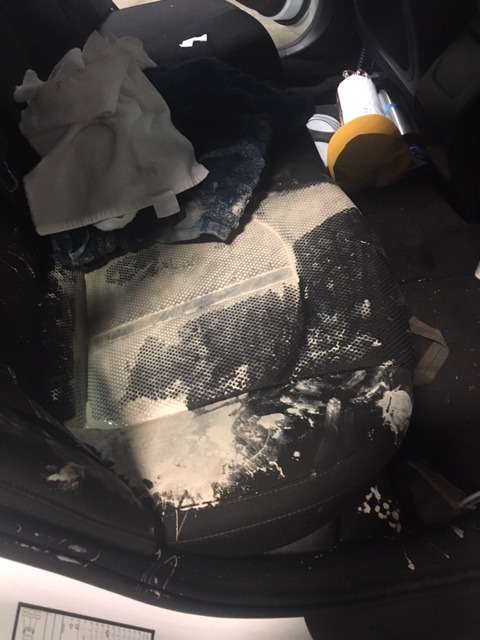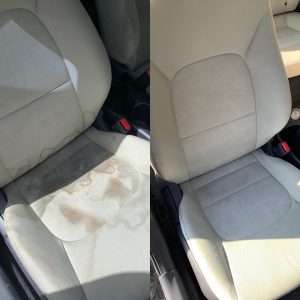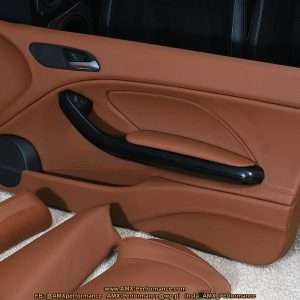Oh no! You’ve got dried paint on your car’s interior. We’ve all been there, haven’t we? Whether it was a rogue brush during a DIY project, a spilled can on the way home from the hardware store, or a “creative” kiddo with access to art supplies, finding paint where it shouldn’t be is never fun. Don’t panic! Removing dried paint from your car interior might seem daunting, but with the right approach and a little patience, you can restore your car’s interior to its former glory. Let’s dive into how to tackle this sticky situation, shall we?
Assessing the Damage: Identifying the Type of Paint on Your Car Interior
Before you start scrubbing away, it’s crucial to identify what kind of paint you’re dealing with. Is it latex, acrylic, oil-based, or something else entirely? Knowing the type of paint will help you choose the most effective and safest removal method for your car’s interior surfaces. Different paints react differently to solvents and cleaning agents, so this step is essential to avoid further damage. Take a close look at any paint cans or containers involved to determine the paint type.
Gentle Cleaning: Initial Steps to Remove Dried Paint from Car Interior
Before resorting to harsh chemicals, let’s try some gentle methods first. These are less likely to damage your car’s interior. Remember, patience is key!
- Warm Water and Soap: A classic for a reason! Mix warm water with a mild dish soap and gently scrub the affected area with a soft cloth.
- Soft Bristle Brush: For textured surfaces, a soft-bristle brush can help loosen the paint without scratching.
- Microfiber Cloth: Always use a microfiber cloth to wipe away the loosened paint and soapy residue. They’re gentle and absorbent.
Sometimes, this is all it takes! A little elbow grease and some soapy water can work wonders, especially if the paint is relatively fresh.
Solvent Solutions: Using Chemicals to Remove Stubborn Dried Paint from Car Interior
If the gentle approach doesn’t cut it, it’s time to bring out the solvents. But proceed with caution! Always test any solvent in an inconspicuous area first to ensure it doesn’t damage the material.
Choosing the Right Solvent for Removing Paint
Here are a few options to consider:
- Isopropyl Alcohol (Rubbing Alcohol): Effective on many types of paint, but test first!
- Acetone (Nail Polish Remover): Powerful, but can damage some plastics and fabrics. Use sparingly and test thoroughly.
- Commercial Paint Remover: Follow the manufacturer’s instructions carefully and ensure it’s safe for automotive interiors.
Important: Always wear gloves and work in a well-ventilated area when using solvents.
Tip: Apply the solvent to a clean cloth, not directly to the paint. This gives you more control and prevents oversaturation.
The Scrubbing Process: Safely Removing Paint from Different Car Interior Surfaces
Now comes the actual removal process. Remember to be gentle and patient. Rushing can lead to damage.
Removing Paint from Fabric Seats
Dab the solvent onto the paint stain and let it sit for a few minutes. Then, gently blot the area with a clean cloth. Repeat until the paint is gone. Use a clean, damp cloth to remove any solvent residue.
Removing Paint from Leather Seats
Leather is delicate! Use a leather cleaner and conditioner after removing the paint to restore its moisture and prevent cracking. Test the solvent in a hidden area first.
Removing Paint from Plastic Surfaces
Plastic is generally more durable, but some solvents can still cause discoloration. Test in an inconspicuous area. Use a plastic-safe cleaner after removing the paint.
Interesting Fact: Did you know that using a hairdryer on low heat can sometimes soften dried paint, making it easier to remove? Just be careful not to overheat the area!
Final Touches: Cleaning and Protecting Your Car Interior After Paint Removal
Once the paint is gone, it’s time to clean and protect your car’s interior. This will help prevent future stains and keep your car looking its best.
- Vacuum: Vacuum the entire area to remove any loose debris.
- Interior Cleaner: Use a high-quality interior cleaner to clean all surfaces.
- Protectant: Apply a protectant to leather and plastic surfaces to prevent fading and cracking.
Frequently Asked Questions (FAQ)
Removing dried paint from your car’s interior can be a bit of a process, but with the right tools and techniques, it’s definitely achievable. Remember to be patient, test your cleaning solutions, and prioritize the safety of your car’s surfaces. Don’t be afraid to seek professional help if you’re unsure about any step. Now go forth and reclaim your clean car interior! You’ve got this!





